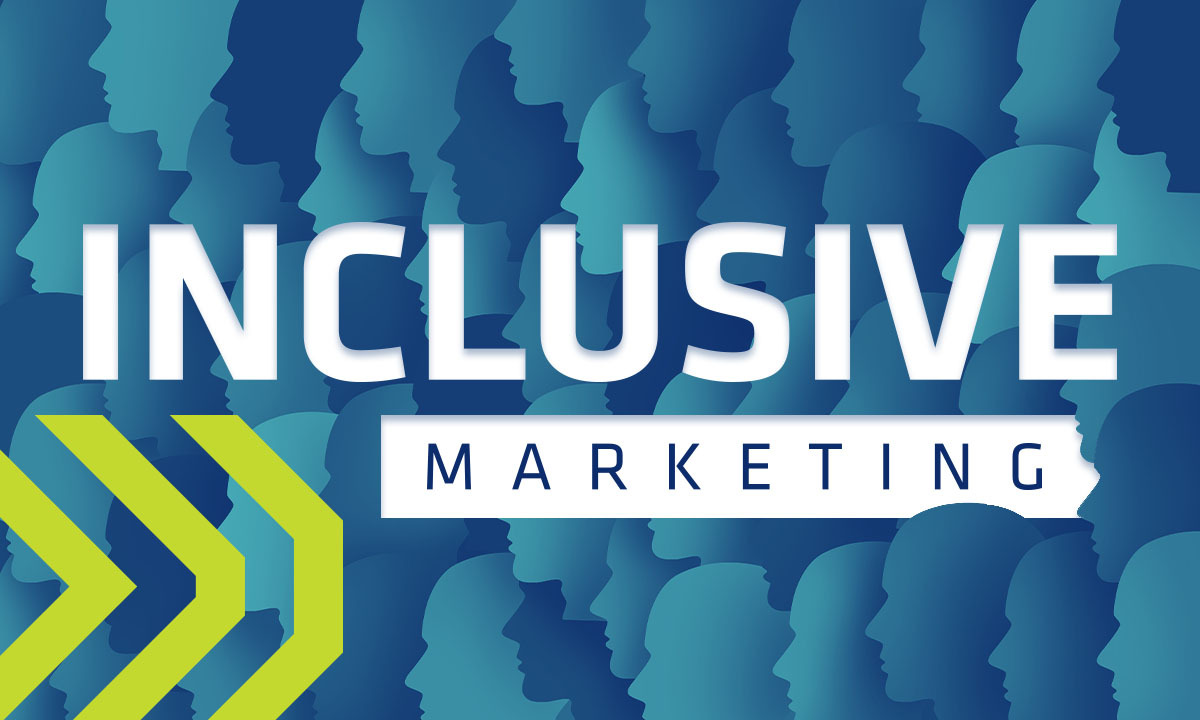


In today’s marketplace, brand trust is emerging as the most important factor in driving purchase decisions and brand loyalty, according to the Edelman Trust Barometer. Perhaps one of the most critical — and often overlooked — drivers of trust is representation. In fact, 64% of respondents to a Microsoft survey were more trusting of brands representing diversity.
That’s where inclusive marketing can play a role.
The Diversity Movement defines inclusive marketing as “Marketing that addresses individuals from all backgrounds and demographic groups; breaks down traditional assumptions about consumers; and tells new, more accurate brand stories by increasing representation of diverse people.” At its core, it’s really how marketers should be thinking about their work already — does this speak to my customer in a way that resonates with them? That makes them feel seen and understood?
While trust is obviously a powerful driver of buyer behavior, you can’t get approval for a multi-million-dollar marketing budget based on the goal of “building trust.” So how does inclusive marketing impact the bottom line? Consider a few facts reported by The Diversity Movement:
Culturally diverse markets have more than $4.7 trillion in buying power.
95% of multicultural millennials are brand loyal (and 75% of B2B buyers are now millennials or GenZ).
Brands with the highest diversity scores showed an 83% higher consumer preference.
So, if you’re not being inclusive in your marketing efforts, you’re leaving dollars on the table. (Budget: approved!)
So now you have the budget to make your marketing efforts more inclusive — and therefore more strategic and effective — but where do you start? It can be a daunting question, especially because inclusivity often touches on some pretty sensitive and polarizing topics like race, gender identity, and others. One of the biggest tips I can offer is this: Aim for progress, not perfection. The fact that you’re reading this blog? Progress. If you take one tip away and apply it to a social post? Progress. And if you mess up? Provide a genuine apology and figure out how to do better next time.
That being said, nobody wants to be the brand that is being called out on social media for missing the mark. So here are some starting points to get your inclusive marketing efforts on the right path:
From planning through measurement, inclusivity should be part of the conversation every step of the way. To set the tone right off the bat, make sure you’re asking the right questions in the planning phase:
Who is our audience? What do they care about? What are their challenges? What do they look like and where do they live? What is their cultural background?
What images and voices should we elevate to resonate with all customers?
What are competitors doing to reach diverse audiences?
Who can we engage with to connect with new audiences in an authentic way?
Is our market research representative of all perspectives?
It’s easy for bias — conscious or unconscious — to creep into our work when we don’t have the right voices contributing to the effort. Who are the right people to include? Ideally, you should be engaging the perspectives of those who identify as part of the group you’re trying to reach. If your team is largely homogenous, look to focus groups or external partnerships for support. But don’t just stop at getting the feedback: listen when concerns are raised and take steps to address them.
Look to your personas, customer journey maps, and audience and industry research to keep your target audience at the center of everything you do. Make sure the language and imagery you use is inclusive and watch out for stereotyping (especially in photography). Consider accessibility to make your content available and useful to people of all abilities. Speak to the unique pain points and challenges of key audiences.
Authenticity is critical. Customers can see right through pandering. They figure out pretty quickly if you actually believe in inclusivity or if you’re just using it as a tactic to sell more stuff. And once you lose their trust, it’s pretty hard to earn it back. Know your audience. Know their motivations, challenges, and priorities. Speak to them and make them feel seen and valued. Creating buyer personas can help.
At the end of the day, inclusive marketing is just plain good marketing. It might take looking at your strategies and tactics with a slightly different lens, but making the extra effort to do so will build brand trust — and deliver bottom line results.
Want to dive deeper into how you can apply inclusive marketing practices in your work? Contact us to get started, and check out these tips for creating inclusive experiences through accessible design.